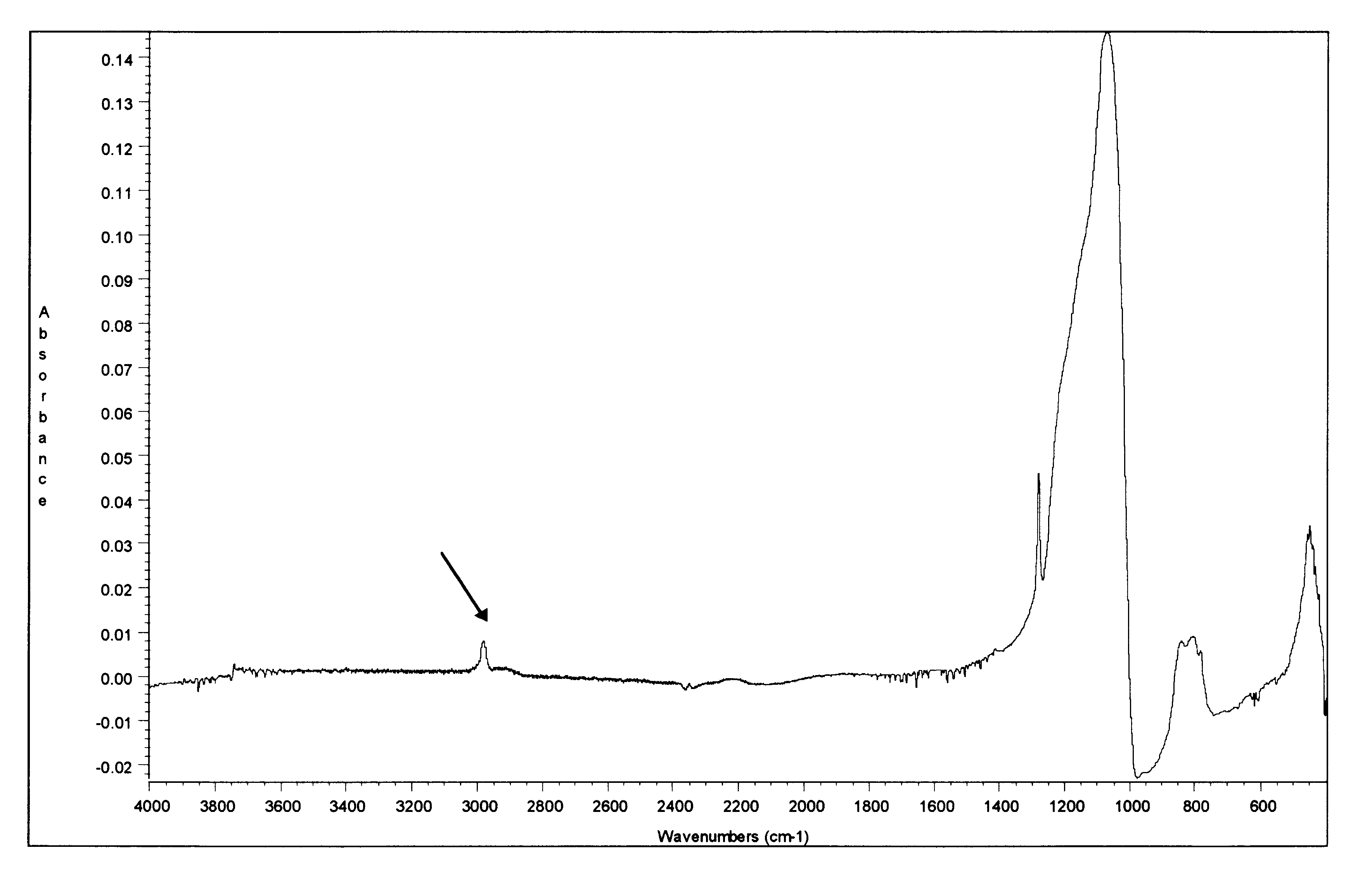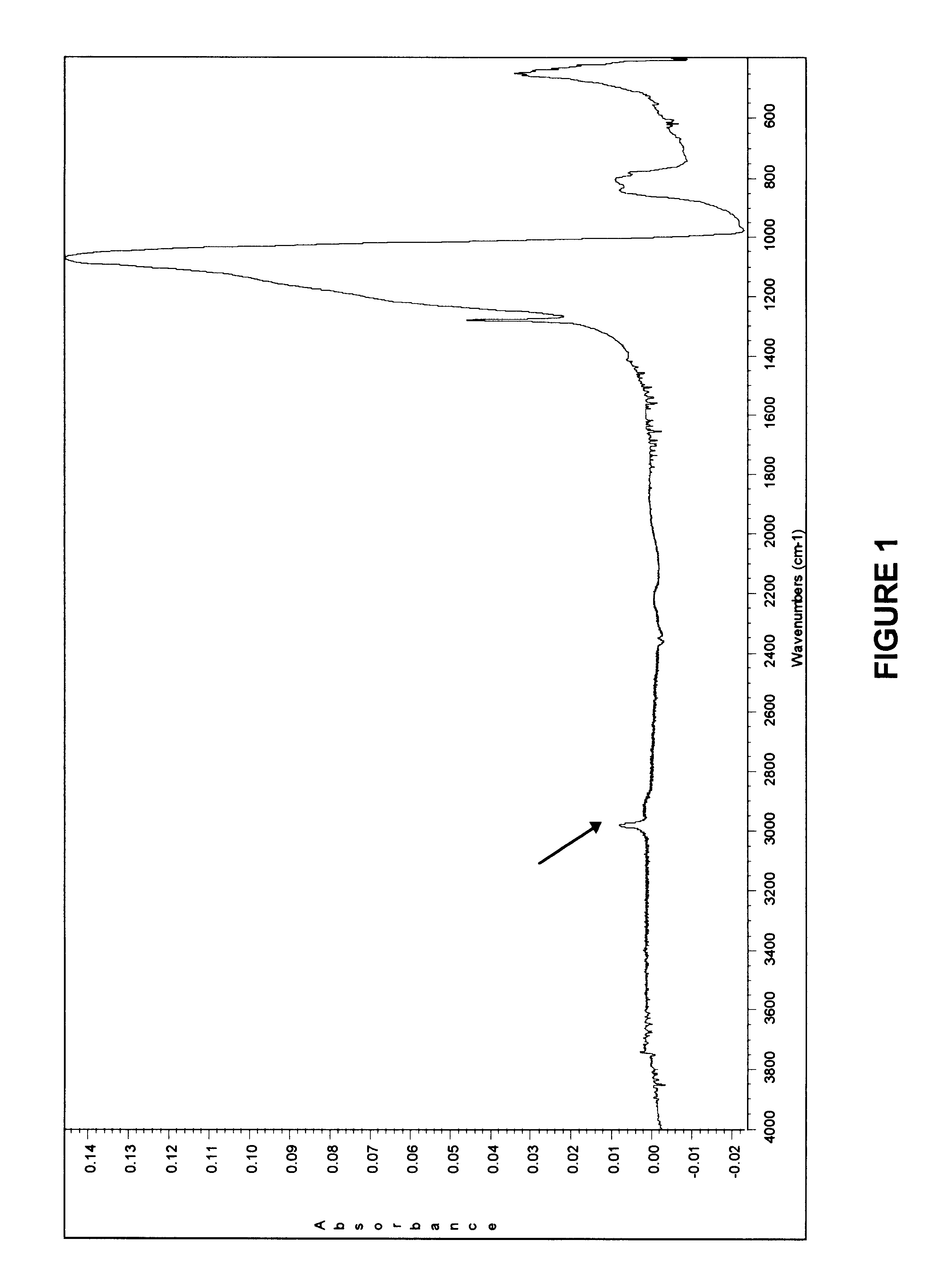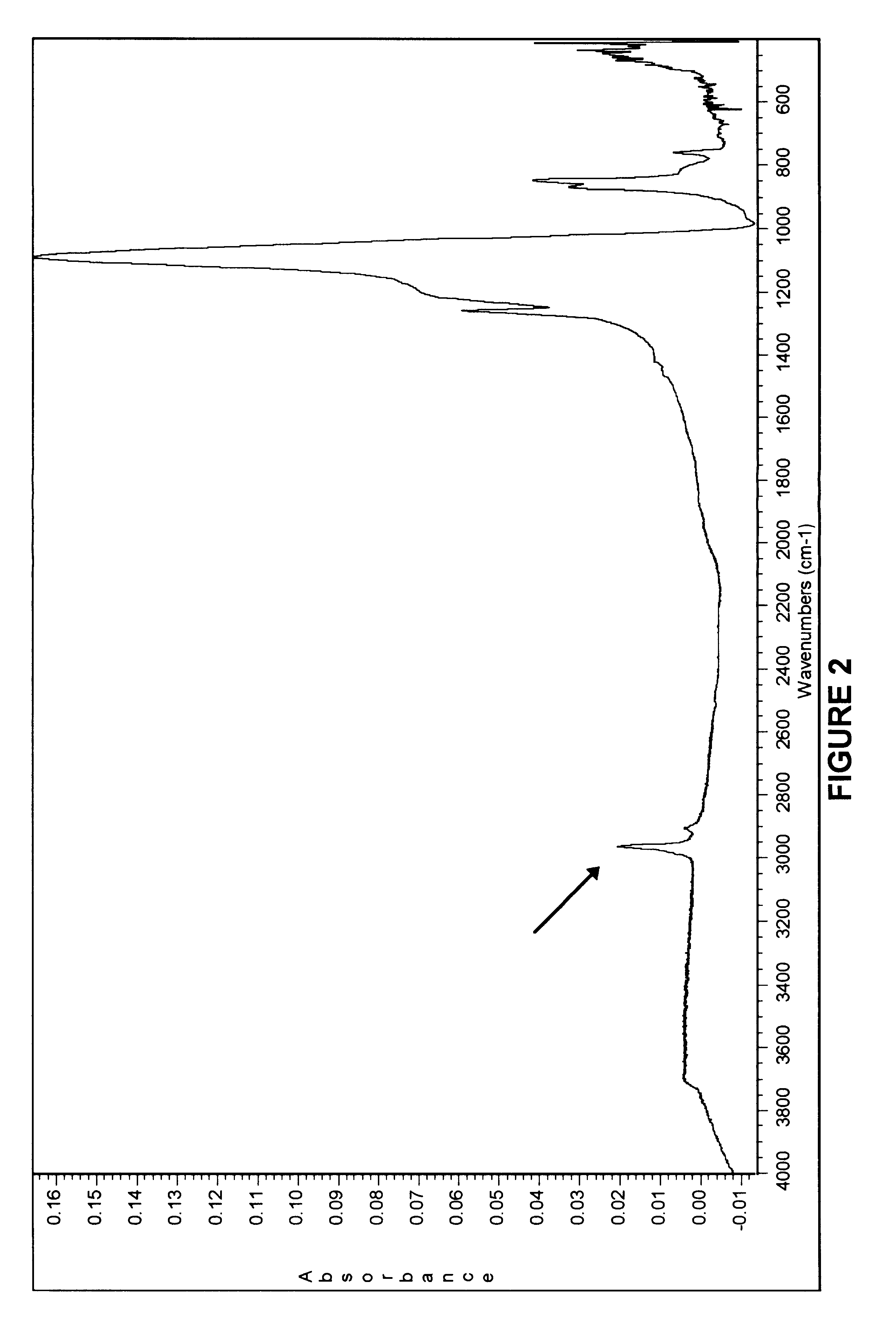Use of multifunctional reagents for the surface modification of nanoporous silica films
a nanoporous silica film and multifunctional technology, applied in the direction of thin material processing, semiconductor/solid-state device details, semiconductor devices, etc., can solve the problems of increasing the dielectric constant of such materials, high polarization and hygroscopic of silanol groups, and the presence of polarizable functional groups on internal pore surfaces of nanoporous silica films
- Summary
- Abstract
- Description
- Claims
- Application Information
AI Technical Summary
Problems solved by technology
Method used
Image
Examples
example 2
Films Treated With Hexamethyldisilazane
This example illustrates the process of surface treatment with hexamethyldisilazane ("HMDZ"), a mono-functional reagent. The properties of the prepared film were then compared to the film treated with trifunctional reagent prepared for Example 1.
A film was processed with the use of a mixture of 50 / 50 (by volume) of HMDZ and 3-pentanone as the surface treatment reagent. The detail of the process is described below: A nanoporous silica precursor was synthesized by adding 208 mL of tetraethoxysilane, 94 mL of triethyleneglycol monomethyl ether (TriEGMME), 16.8 mL deionized water, and 0.68 mL of 1N nitric acid together in a round bottom flask. The solution was mixed, heated, refluxed, cooled and filtered through a 0.1 micron Teflon.RTM. filter as described above for Example 1.
About 2 mL of the nanoporous silica precursor was deposited onto a 4" silicon wafer and then spun at 2500 rpm for 30 seconds. The film was then gelled / aged in a vacuum chamber...
example 3
Films Treated With Dimethyldiacetoxysilane
This example illustrates the process of surface treatment with dimethyldiacetoxysilane ("DMDAS") a di-functional reagent. The properties of the prepared film were then compared to those of the film treated with the trifunctional reagent of Example 1 and the monofunctional reagent of Example 2.
The precursor was synthesized by adding 104.0 mL of tetraethoxysilane (Pacific Pac, Hollister, Calif. 95023), 51.0 mL of Triethylene glycol mono methyl ether (TriEGMME) (Pacific Pac, Hollister, Calif. 95023), 8.4 mL of deionized water, and 0.34 mL of 1N nitric acid (J. T. Baker, Phillipsburg, N.J. 06885) together in a round bottom flask. The solution was mixed, heated, refluxed, cooled and filtered through a 0.1 micron Teflon.RTM. filter as described above for Example 1.
1. Approximately 2.0-4.0 ml of the precursor formed above was deposited separately onto two 4" inch silicon wafers, and spun at 2500 rpm for 30 seconds. The film was gelled and aged in a...
example 4
Comparison of Films of Exs 1-3
This example provides a comparison of the mechanical properties of the products of Examples 1-3, above. As can be appreciated from the data presented in Table 4, below, it is clear that the porous silica films treated with trifunctional reagents shows better mechanical properties and thermal stability.
In order to confirm that the MTAS treated film had a reduced organic content relative to HMDZ treated films, Fourier transform infrared spectroscopy (FTIR) was applied to the produced dielectric films.
Infrared Spectrographic Analysis
FIG. 1 is an FTIR of a film produced by Example 1 [5% MTAS to treat a dielectric film produced using TEOS / TriEGMME]. FIG. 1 shows a very small peak at the 2900 cm.sup.-1 wavelength (Arrow), corresponding to absorbance at a carbon-hydrogen "stretch." FIG. 2 is an FTIR of a film produced by Example 2 [50% HMDZ to treat a dielectric film produced using TEOS / TriEGMME ]with a much stronger absorbance at the 2900 cm.sup.-1 wavelength...
PUM
 Login to View More
Login to View More Abstract
Description
Claims
Application Information
 Login to View More
Login to View More - R&D
- Intellectual Property
- Life Sciences
- Materials
- Tech Scout
- Unparalleled Data Quality
- Higher Quality Content
- 60% Fewer Hallucinations
Browse by: Latest US Patents, China's latest patents, Technical Efficacy Thesaurus, Application Domain, Technology Topic, Popular Technical Reports.
© 2025 PatSnap. All rights reserved.Legal|Privacy policy|Modern Slavery Act Transparency Statement|Sitemap|About US| Contact US: help@patsnap.com



